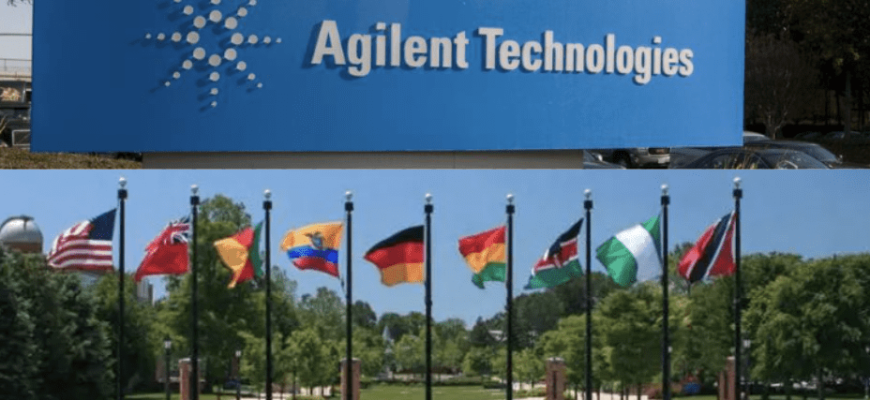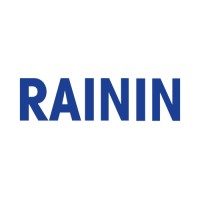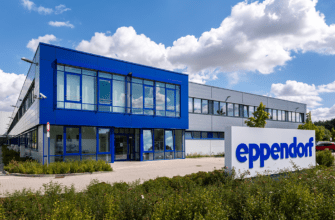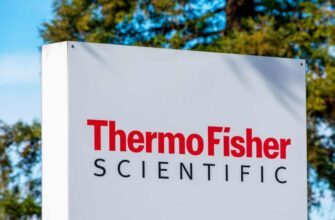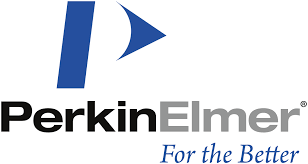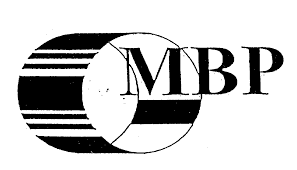Agilent Technologies: A Comprehensive Analysis for Research Laboratories
Agilent Technologies stands as a global leader in providing instruments, software, services, and consumables for analytical laboratories across multiple industries. This detailed report examines the company’s history, current market position, product offerings, financial performance, and future outlook, offering valuable insights for research institutions and laboratory professionals.
Company History and Evolution
From Hewlett-Packard to Global Science Leader
Agilent Technologies was established in 1999 as a strategic spin-off from Hewlett-Packard Company. The initial public offering (IPO) that accompanied this spin-off raised an impressive $2.1 billion, setting a record at the time for the largest IPO in Silicon Valley’s history. The company name “Agilent” was specifically chosen to reflect agility as a core characteristic of the new organization, with its starburst logo designed to symbolize “a burst of insight” that represents the company’s innovative approach.
Hewlett-Packard’s journey into scientific equipment began in 1965 with the acquisition of F&M Scientific, a manufacturer of gas chromatographs. This strategic move laid the foundation for what would eventually become Agilent Technologies. The spin-off in 1999 included several business units from HP, encompassing test and measurement, optics, instrumentation, chemical analysis, electronic components, and medical equipment product lines.
Transformation and Focus
From 1999 to 2014, Agilent produced a diverse range of products, including optics (LED, laser), semiconductors, electronic design automation (EDA) software, and test and measurement equipment for electronics. In 2014, a significant restructuring occurred when these divisions were spun off to form Keysight Technologies. Since then, Agilent has focused its efforts on expanding into the pharmaceutical, diagnostics, clinical, academic, and government research markets.
The company has maintained a commitment to innovation while refining its strategic direction. On May 1, 2024, a leadership transition occurred when Padraig McDonnell succeeded Mike McMullen as CEO, marking a new chapter in Agilent’s corporate direction.
Business Structure and Market Position
Global Presence and Organizational Structure
Agilent Technologies is headquartered in Santa Clara, California, and maintains a strong global presence with a workforce of approximately 17,000 employees worldwide. The company primarily operates through direct sales channels but also leverages distributors, resellers, and internet sales to reach its diverse customer base.
In recent developments, Agilent announced a new organizational structure, including leadership changes, designed to expedite the company’s operational transformation and foster higher growth through a market-focused, customer-centric enterprise strategy. This restructuring reflects Agilent’s commitment to continuous improvement and adaptation to changing market dynamics.
Operating Divisions
Agilent’s operations are structured around three main business groups:
- Life Sciences and Diagnostics Markets Group (LDG) – This division provides a wide portfolio of technology platforms and solutions serving customers’ value chains, such as therapeutic production and the development of critical cancer diagnostics. In Q1 2025, LDG reported $647 million in revenue, representing a 4% increase in reported growth.
- Agilent CrossLab Group (ACG) – Focused on providing services and support for laboratory workflows, this division reported $696 million in revenue in Q1 2025, with a 1% increase in reported growth. ACG maintains an impressive operating margin of 31.8%.
- Applied Markets Group (AMG) – Primarily serving food, environmental, and advanced materials markets, this division reported $338 million in revenue in Q1 2025. While this represented a 4% decrease in reported growth, the company attributes this to challenging year-over-year comparisons and the timing of Lunar New Year.
Comprehensive Product Portfolio
Analytical Laboratory Solutions
Agilent Technologies offers a full suite of technology platforms designed for analytical laboratories. These include:
- Chromatography Solutions: Advanced gas and liquid chromatography systems, including the recently released next-generation InfinityLab LC Series portfolio featuring the 1290 Infinity III LC with InfinityLab Assist Technology.
- Mass Spectrometry: State-of-the-art mass spectrometry technologies, including the award-winning Agilent 6495D Triple Quadrupole LC/MS System, which was recognized as the “Best New Analytical Science Product of 2023”.
- Spectroscopy and Material Analysis: Comprehensive spectroscopy solutions including atomic absorption, UV-vis, fluorescence, FTIR, and NMR technologies for materials characterization and analysis.
Diagnostics and Genomics
Agilent offers cutting-edge solutions for diagnostics and genomics research, including:
- Microarray Technology: As a global leader in genomic microarrays, Agilent provides researchers with high-performance solutions to analyze thousands of genes simultaneously, rapidly, reliably, and reproducibly.
- Digital Pathology: Advanced digital pathology solutions have been developed in collaboration with Hamamatsu, PathAI, Proscia, and Visiopharm, creating an innovative end-to-end digital pathology workflow that integrates AI-driven precision pathology software with automated staining solutions.
- Genomics Solutions: Pioneer in target enrichment technology used as part of next-generation sequencing (NGS) workflows, complemented by sample preparation tools, QA/QC instrumentation, bioanalyzers, and automation solutions.
Digital Transformation Initiatives
Agilent has been advancing digital laboratory instrumentation and technology to improve lab workflow, efficiency, and productivity:
- CrossLab Virtual Assist: Introduced in 2020, this mobile application facilitates high-quality remote technical support for laboratory operations.
- CrossLab Connect: A digital solution that improves laboratory optimization and sustainability by enabling more efficient utilization of instruments, potentially lowering a lab’s energy consumption.
Services and Laboratory Management
Comprehensive Support Solutions
Agilent provides extensive laboratory management services, including:
- Enterprise asset management
- Laboratory business intelligence
- Equipment management and service
- Software maintenance
- Regulatory compliance assistance
- Sample preparation workflows
- Specialized consumables and supplies
The company’s service model offers flexible options for both design and experimental support, ranging from full Certified Service Providers who run customer samples on Agilent platforms to dedicated field engineers helping customers establish and maintain their own facilities.
Technical Support and Field Services
Agilent’s field service engineers are highly regarded in the industry for their expertise and responsiveness. As noted by laboratory professionals, these engineers are “worth their weight in gold” once a company has more than 10 instruments to maintain. The comprehensive service contracts and technical support infrastructure ensure reliable operation of Agilent’s sophisticated instrument systems.
Financial Performance and Market Position
Recent Financial Results
For the first quarter of fiscal year 2025, which ended on January 31, 2025, Agilent reported:
- Revenue of $1.68 billion, representing growth of 1.4% reported and 1.2% on a core basis compared with Q1 2024.
- Non-GAAP net income of $377 million with earnings per share (EPS) of $1.31, up 2% from Q1 2024.
- Operating margin of 25.1%, demonstrating strong operational efficiency.
Revenue distribution by region showed 40% coming from the Americas, 27% from Europe, and 33% from the Asia-Pacific region. Performance in the Americas grew 3%, Europe 2%, and Asia outside of China grew 2%, all slightly ahead of expectations, while revenue in China declined 4%.
Future Outlook
Agilent’s financial outlook for the full 2025 fiscal year projects revenue in the range of $6.68 billion to $6.76 billion, representing growth of 2.6% to 3.8% reported and 2.5% to 3.5% core. For Q2 2025, revenue is expected to be between $1.61 billion and $1.65 billion, an increase of 2.4% to 4.9% reported and 2.5% to 5.0% core.
CEO Padraig McDonnell expressed confidence in the company’s trajectory, stating, “What we are doing at Agilent is turning a good company into a great one. We are committed to continuous improvement and adapting to changing market dynamics”.
Strategic Initiatives and Innovation
Recognition and Industry Leadership
Agilent has received several notable recognitions:
- Named to Fortune’s list of Best Workplaces in the World, ranking 11th among 25 companies based on employee satisfaction surveys.
- The World Economic Forum recognized Agilent’s factories in Shanghai, China, and Penang, Malaysia, as part of the Global Lighthouse Networks for their work in scaling artificial intelligence, 3D printing, robotics, big-data analytics, and industrial internet of things (IIoT).
- Notably, Agilent remains the sole analytical and clinical laboratory technology company worldwide to receive this recognition.
- Dr. Adeyemi Adeleye, an Earth and Environmental Engineering assistant professor at Columbia University, received the 2024 Early Career Professor Award from Agilent for contributions to environmental health and sustainability.
Product Innovation and Research Focus
Agilent continues to demonstrate a strong commitment to innovation through new product launches:
- Mito-rOCR Assay Kit: Launched in November 2024, providing an end-to-end solution for analyzing mitochondrial function.
- InfinityLab LC Series: Next-generation portfolio including the 1290 Infinity III LC with enhanced laboratory efficiency features.
- J&W 5Q GC/MS Columns: Introduced in August 2024, delivering advanced performance and durability in gas chromatography/mass spectrometry applications.
The company is known for substantial investments in research and development, both internally and through collaborations with leading universities, to advance the state of knowledge in life sciences, diagnostics, and chemical analysis.
Acquisition Strategy and Growth Trajectory
Strategic Acquisitions
Agilent has pursued an active acquisition strategy to expand its capabilities and market reach:
- Acquired Biovectra in July 2024 for $925 million, strengthening its position in the Contract Development and Manufacturing Organization (CDMO) sector.
- Acquired BioTek Instruments in 2019 for $1.165 billion, enhancing its life science instrumentation portfolio.
- Previous acquisitions include ACEA Biosciences ($250 million in 2018), ProZyme, Young In Scientific, Advanced Analytical Technologies ($250 million), Genohm, Ultra Scientific, Lasergen, Luxcel Biosciences, Cobalt Light Systems (£40 million in 2016), and Seahorse Bioscience ($235 million in 2015).
- These acquisitions have allowed Agilent to expand its technological capabilities, enter new markets, and strengthen its competitive position across multiple segments.
Competitive Landscape
Market Position and Differentiation
Agilent competes in a sophisticated market with several major players. Key competitors vary by business segment:
- In the Life Sciences and Applied Markets: Thermo Fisher Scientific, Waters Corporation, Shimadzu Corporation, and PerkinElmer.
- In Diagnostics and Genomics: Abbott Laboratories, Illumina, Roche Ventana Medical Systems, and Twist Bioscience Corporation.
- In CrossLab Services: Danaher Corporation, PerkinElmer, Shimadzu Corporation, Thermo Fisher Scientific, and Waters Corporation.
According to industry professionals, Agilent’s competitive advantages include high-quality instruments, responsive service, and integrated workflows. Particularly in the high-performance liquid chromatography (HPLC) and mass spectrometry markets, Agilent is recognized for reliable instruments and intuitive software systems.
Future Outlook and Strategic Direction
Agilent Technologies continues to demonstrate a strong commitment to innovation, customer-centric solutions, and strategic growth. The company’s focus on digital transformation, comprehensive laboratory solutions, and expanding its presence in high-growth markets positions it well for sustained success in the analytical laboratory sector.
Under new leadership and with a refreshed organizational structure, Agilent is actively addressing changing market dynamics while maintaining its core values of quality, reliability, and scientific excellence. The company’s stated goal of “turning a good company into a great one” reflects its ambition to continue leading the industry through continuous improvement and adaptation.
For research institutions, diagnostics laboratories, and other scientific organizations, Agilent represents a comprehensive partner offering end-to-end solutions across the laboratory workflow. Its broad product portfolio, extensive service capabilities, and commitment to innovation make it a significant player in advancing scientific research and diagnostic capabilities worldwide.

